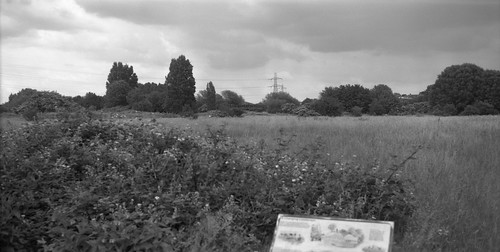 |
| Zeiss Ikon Cocarette with HP5 Plus |
Last weekend, on the day before
126 Day, I shot film in my two
116 format cameras. I'd had a
Zeiss Ikon Cocarette for some time with which I'd previously used some 120 film, and had intended to write about, but taking photographs on the date of 11/6 this year was prompted by acquiring a
Kodak No.2A Brownie in the format a few weeks ago. 116 was a paper-backed rollfilm, very much like 120, but the film was 70mm wide (compared to 120's 62mm), and the typical frame size for the format is nominally 6.5x11cm. Kodak discontinued manufacture of 116 film in the mid-1980s, but there are many 116 cameras still around, and to use them can be done with essentially three strategies: using original, expired 116 film; using other 70mm film stock in the cameras; or adapting the cameras to use 120 film.
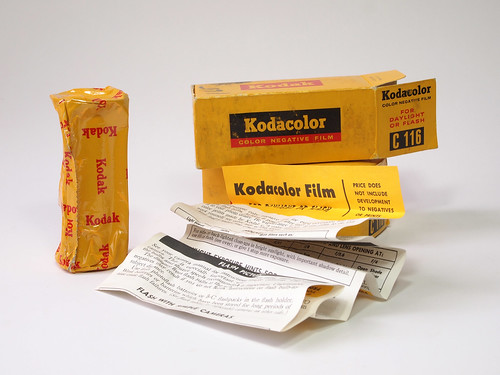 |
| Kodacolor colour negative films |
Fortunately, both 116 cameras had the original metal spools in left in the supply side chamber when I bought them, and, online, I found a couple of rolls of Kodacolor negative film to shoot on the day. These dated back to the late 1950s and early 1960s with 'process before' dates of July 1961 and November 1964. Originally 32 ASA, I rated the films using a rough approximation at around 6 to compensate for loss of sensitivity with age. I shot one roll in the Cocarette, handheld, as this had a much faster lens than the Brownie, and, although I mostly shot at f4.5 with 1/50th, these negatives were predictably underexposed.
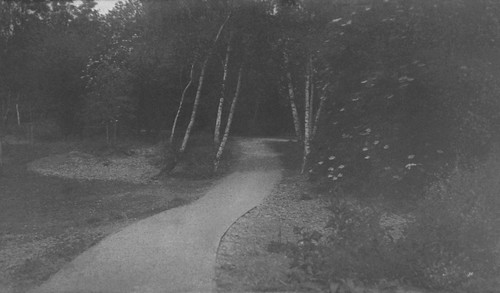 |
| Zeiss Ikon Cocarette with expired Kodacolor film |
With the No.2A Brownie, with a maximum aperture of around f11, and an 'instant' setting around 1/30th, I shot all the frames of the Kodacolor film on the T setting. As the camera does not have tripod mounts, I also had to find flat surfaces to place the camera for these exposures, stopping down the Brownie's meniscus lens to f16 or f22, and using times in seconds up to about a minute. The Kodacolor films were meant for C22 processing, a precursor to the current C41, but I used
stand development in R09 One Shot to produce a monochrome negative. The orange mask on the negatives appears darker than current colour negative film, and as a result of the size of the images, I had to resort to photographing the negatives on a light box rather than scanning.
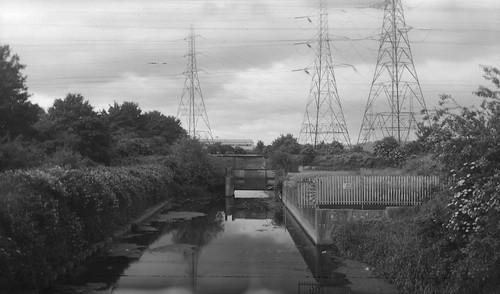 |
| Kodak No.2A Brownie with expired Kodacolor film |
The images from the Brownie camera were much clearer than those from the Cocarette, thanks to having received sufficient exposure to compensate for age; I also had problems with the focus of the Cocarette. As well as the Kodacolor film, I also shot a couple of 120 film with the camera, adapting it to take the smaller spools. With the lens positioned at infinity, the focus is notably soft. I suspect that this is just
behind infinity, as the whole image has a softness, not just in the far distance, but this was something I had failed to check before shooting with the camera on the day, although earlier tests had suggested a problem. The image below demonstrates this, though it's only clear when zoomed in. It may also be due to a lack of film flatness, evident at the top and bottom of some of the images on 120 film with a further loss of focus and straight lines beginning to curl.
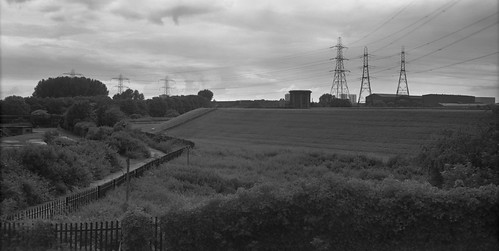 |
| Zeiss Ikon Cocarette with Agfa Superpan |
As the Kodacolor shots with the Cocarette were all at wider apertures, this would no doubt have been worse, however, on shots which were not focussed at infinity, the sharpness is much better, even in the underexposed image below of the daisies.
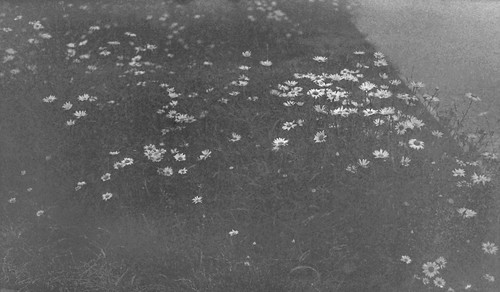 |
| Zeiss Ikon Cocarette with expired Kodacolor |
With the 120 film shot in the Cocarette, those images in better focus were those that were again not set at infinity: in the first image below, I estimated the focus to be around 30 feet to the detritus in the middle distance, and used a small enough aperture for depth of field to encompass most of the scene; the following two images were shot with much closer focus, but equally are better than those at infinity.
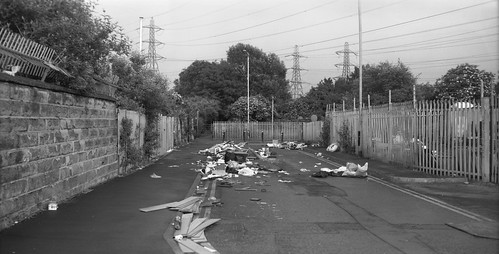 |
| Zeiss Ikon Cocarette with HP5 Plus |
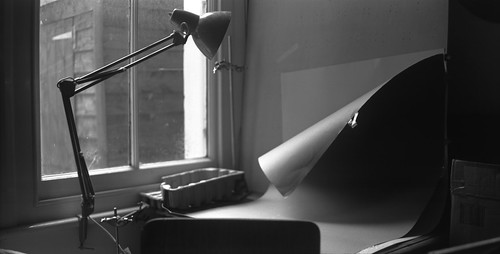 |
| Zeiss Ikon Cocarette with Agfa Superpan |
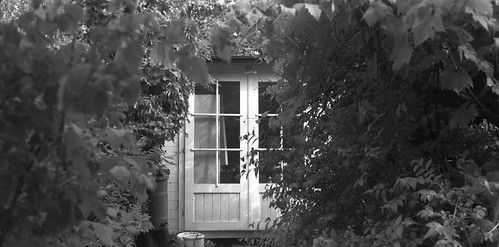 |
| Zeiss Ikon Cocarette with Agfa Superpan |
Using 120 film in a 116 camera does make for an attractively proportioned image in landscape orientation; beyond the scope of this post, there's a fair amount on the net from others about how to do this but it's something that deserves a separate post in itself for a future date.
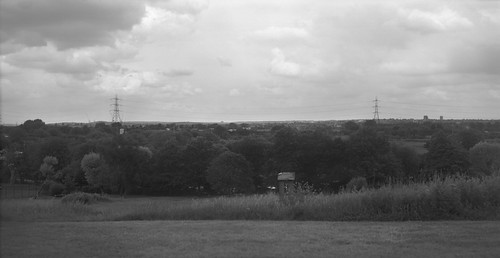 |
| Zeiss Ikon Cocarette with Ilford HP5 Plus |










Shot with 120, the images have a cinematic aspect ratio that is pleasing in this modern age of widescreen TVs. Good work making images out of that 90-year-old camera!
ReplyDeleteThanks for your comment - as you might have seen I've shot a bit more recently, trying to get a bit more accurate with the focus.
Delete